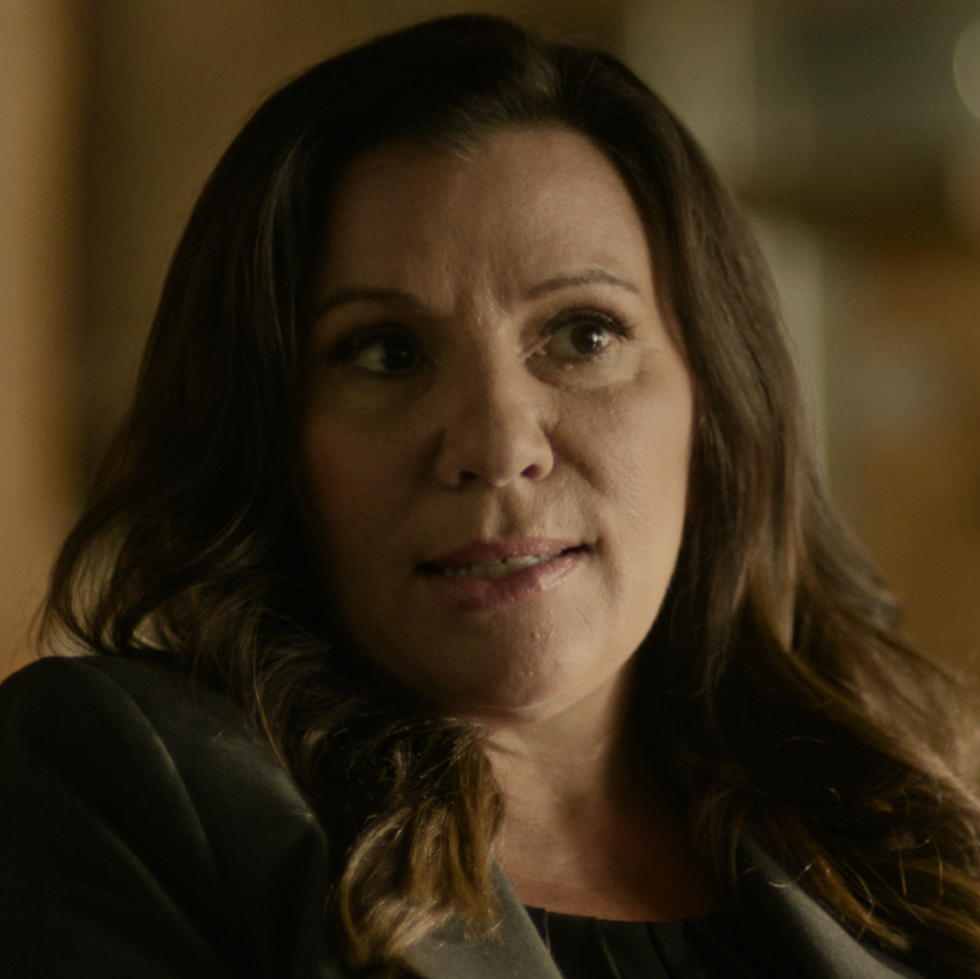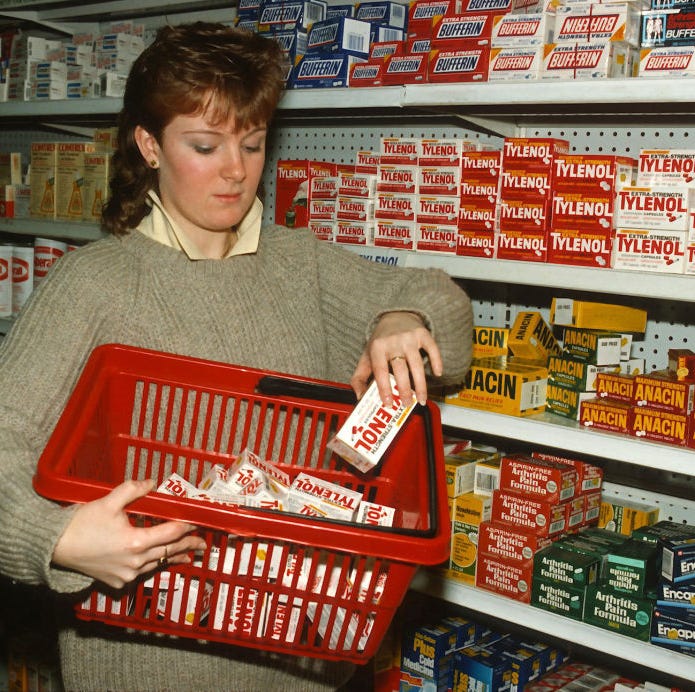The terrifying 1980s Tylenol scandal that emerged in Chicago, Illinois, saw seven people die after taking the popular painkiller, Tylenol, in 1982. It has now been re-examined in a new Netflix docu-series, Cold Case: The Tylenol Murders, featuring interviews with a suspect accused of lacing the tablets with cyanide, law enforcement officers involved in the case and victims’ loved ones.
It also features plenty of clips of top executives at Johnson & Johnson – the drug company that owned the Tylenol brand – and shows hows it repeatedly positioned itself as a victim too, rather than claiming ownership over any wrongdoing. No firm evidence has ever been found to suggest that Johnson & Johnson were responsible for painkillers being laced with cyanide, although it was later discovered that the McNeil plants that produced the medication did have cyanide on site that was easily accessed by staff.
Elsewhere, two men were named as suspects in the police investigation: James Lewis, who wrote an extortion letter to the makers of Tylenol, demanding $1 million be paid into an account belonging to a man he’d fallen out with, and Roger Arnold, a man who said he kept cyanide at home and who worked in the warehouse of a store in which Tylenol was sold. Neither were ever convicted of lacing bottles of Tylenol with cyanide.
News of deaths linked to poisoned Tylenol spread throughout the US from 1982 onwards and Johnson & Johnson had to do serious damage control. But not only was the company hit in terms of reputation, but financially too.
This is what we know about how the scandal hit Johnson & Johnson’s profit, how they executed a ‘PR masterclass’ to claw back customers, and whether or not they were ever found guilty of any wrongdoing.
Michelle Rosen, whose mother Mary Lynn Reiner, died after taking a Tylenol in 1982
How much money did Tylenol lose in 1982?
At the time, Tylenol was a dominant product in the over-the-counter pain reliever market, holding 35% of the market share and accounting for $500m in annual sales for Johnson & Johnson. However, the crisis led to a dramatic decline in sales. Within weeks, Tylenol’s market share plummeted to less than 10%.
The financial loss to Johnson & Johnson was estimated to be well over $100 million (£74 million) in the immediate aftermath, a substantial amount for the company during that period. That same figure would be about $331 million (£245 million) in today’s terms.
The losses stemmed from multiple factors. First, Johnson & Johnson initiated a nationwide recall of Tylenol products, pulling approximately 31 million bottles from shelves. This recall alone cost the company an estimated $100 million.
Additionally, the company invested heavily in a public relations campaign to restore consumer trust, which included the introduction of tamper-proof packaging, a groundbreaking safety measure at the time. These efforts incurred further costs but were crucial in rebuilding the brand’s reputation. They also shelled out for adverts, featuring trusted figures explaining why they still trusted the brand.
Despite the significant financial hit, Johnson & Johnson’s handling of the crisis is often cited as a textbook example of effective crisis management. The company prioritised consumer safety and transparency, which ultimately helped it regain market share and consumer trust.
Yvonne Hemsey
Did Johnson & Johnson get sued over Tylenol?
By the following year of 1983, Tylenol had recovered to capture 30% of the market share, demonstrating the effectiveness of Johnson & Johnson’s response, but the families of 7 Chicago area victims were not convinced and sued the pharmaceutical company for knowing the bottles were susceptible to tampering. It took eight years for the lawsuit to be settled without any admission of guilt.
Tylenol was also hit with another scandal in 1986, when a woman, Diane Elsroth, in New York was reported dead after having taken a Tylenol, despite the painkiller’s packaging having the new tamperproof packaging on it.
After Diane Elsroth died, some people’s suspicions moved away from the idea of a dangerous individual tampering with the painkillers and turned towards the producers of Tylenol itself.
Was Johnson & Johnson ever found guilty of the Tylenol murders?
Investigations into the McNeil labs, where Tylenol was produced, were carried out – largely by Johnson & Johnson itself but also the FDA, which some in Cold Case: The Tylenol Murders allege left room for bias.
Millions of bottles of painkillers were also destroyed, which Michelle Rosen, whose mother Mary Lynn Reiner died in 1982 after taking the painkiller, likens to destroying massive amounts of evidence.
“I feel like this case has had tunnel vision since day one [and overlooked Johnson & Johnson],” Rosen says in the three-part series. “From the beginning [they’ve been portrayed] as a fantastic company who is looking out for their customers’ best interests. But I think market share is all that matters here. Johnson & Johnson will do anything to save their brand.”
As a reminder though, Johnson & Johnson were never formally charged with any wrongdoing.
Related Stories


